
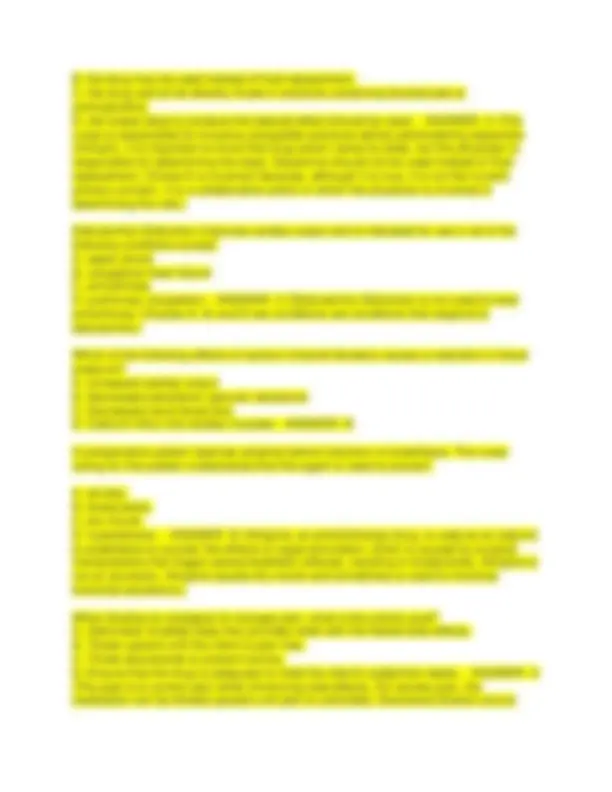
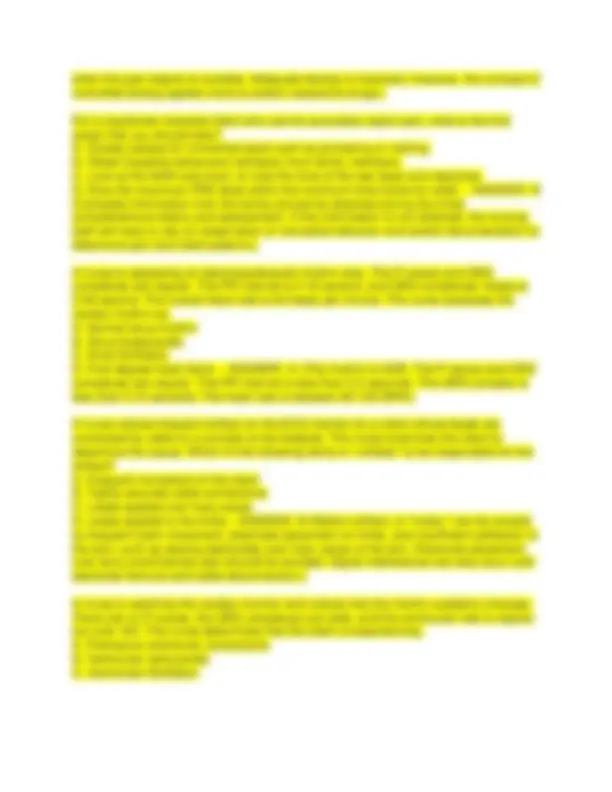
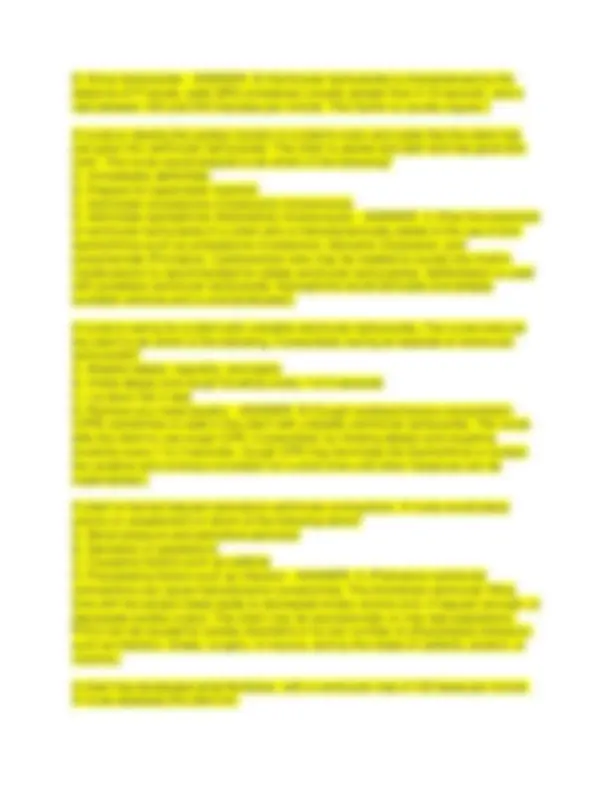
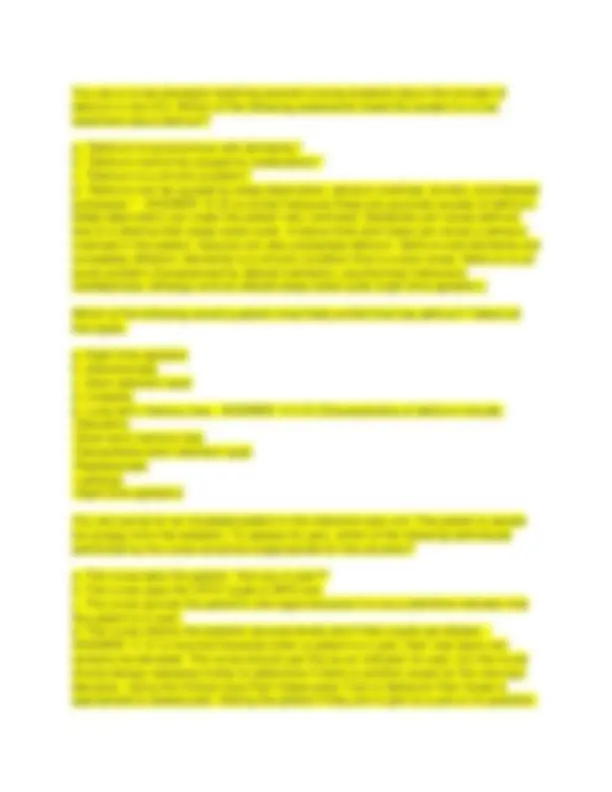

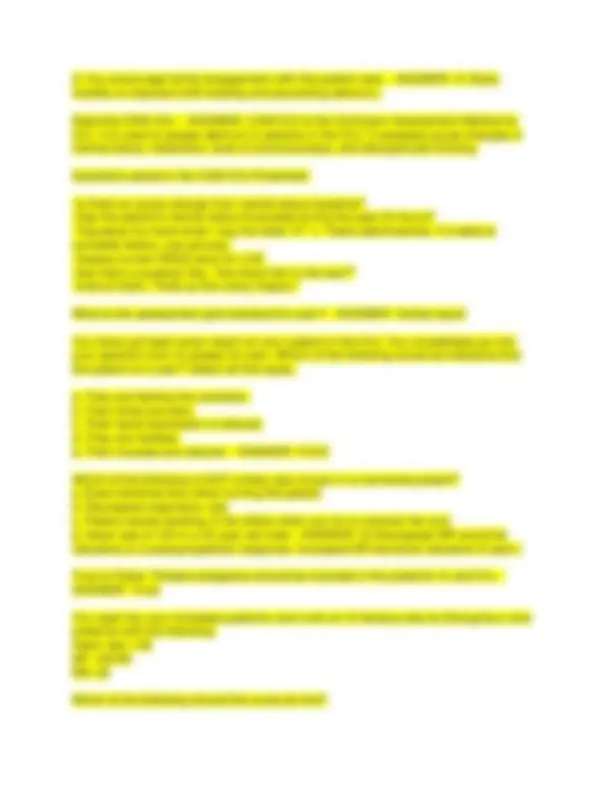
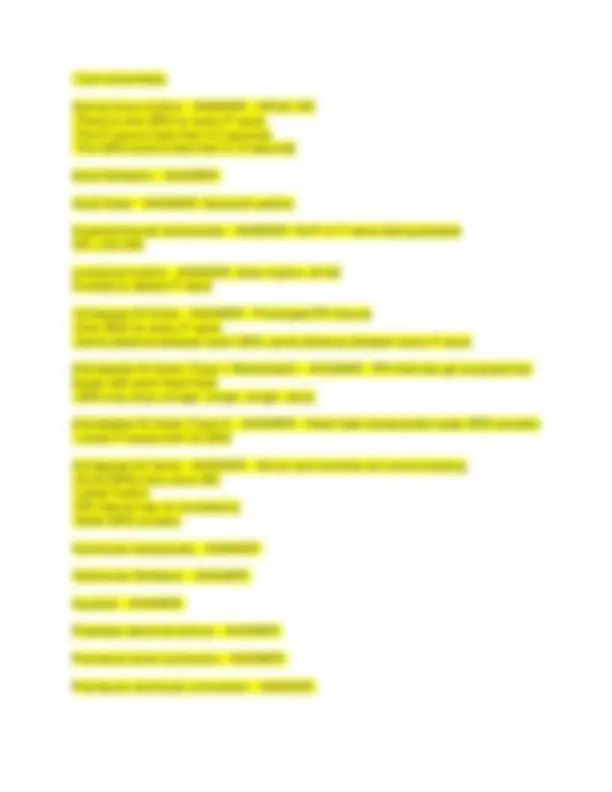
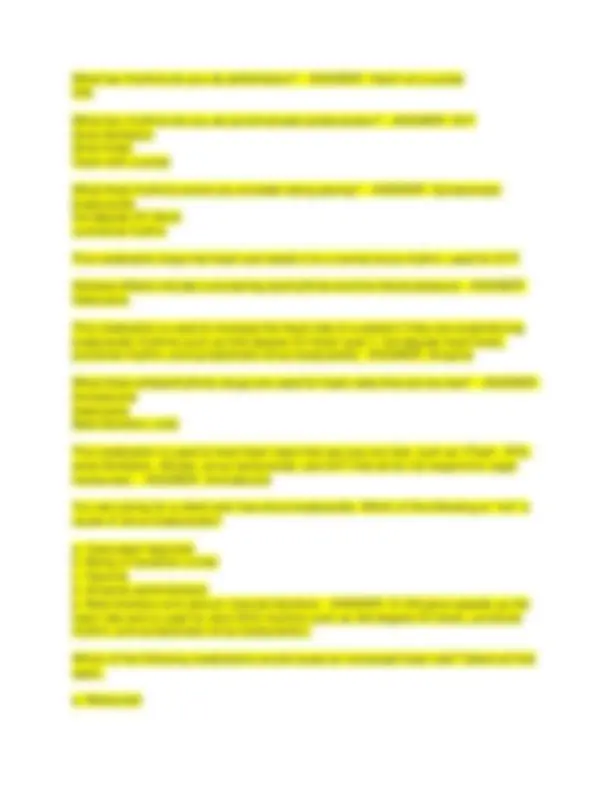
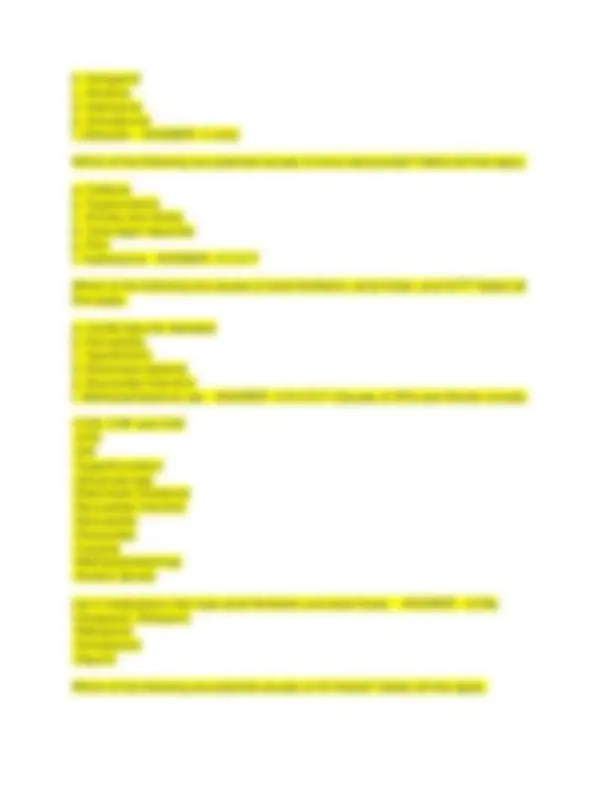
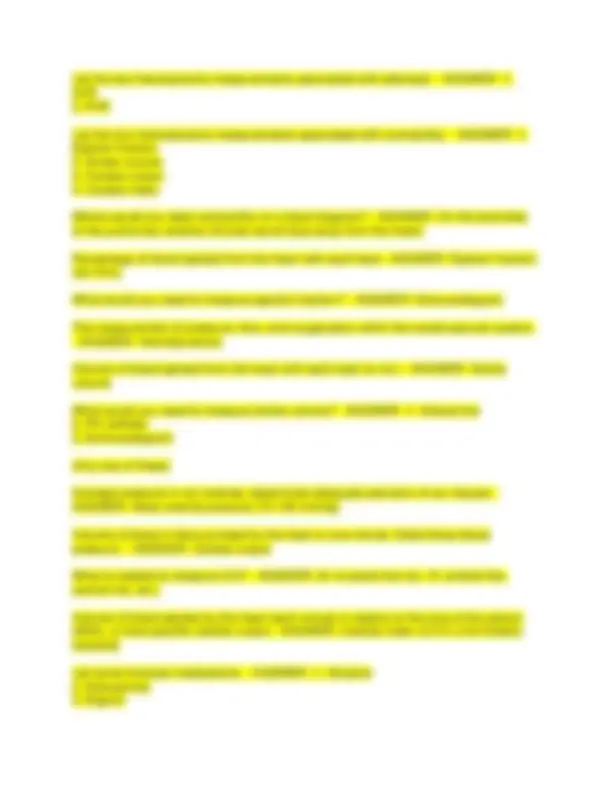
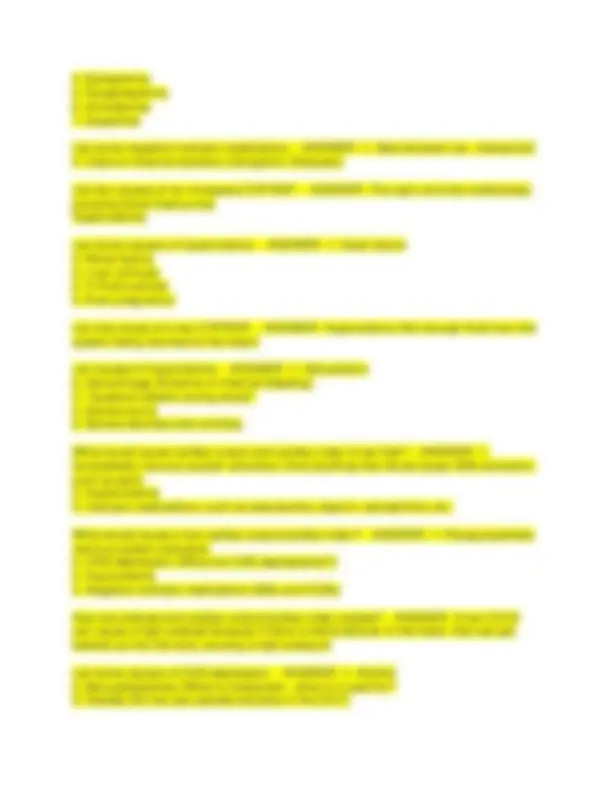
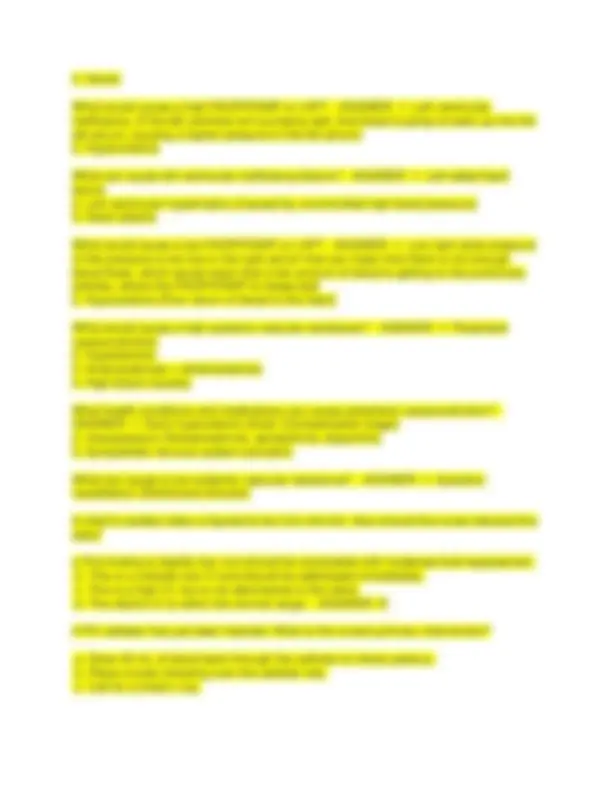
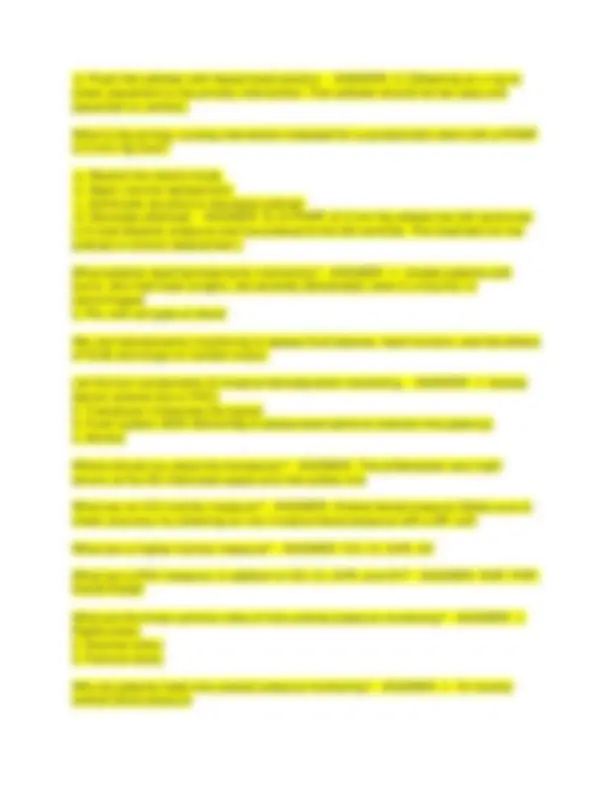
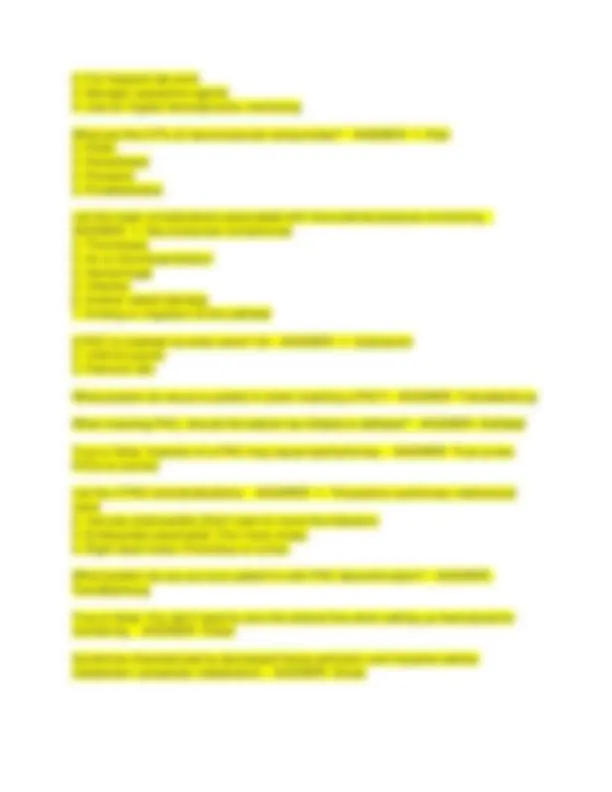
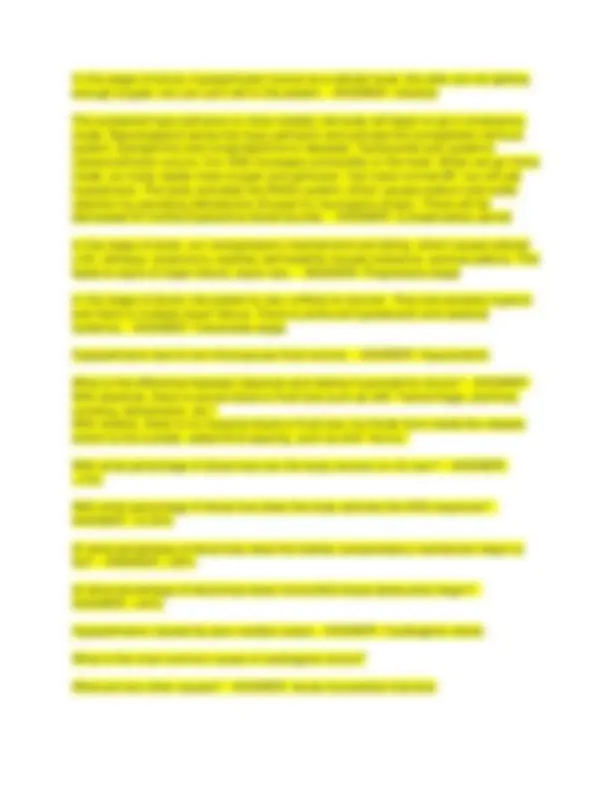


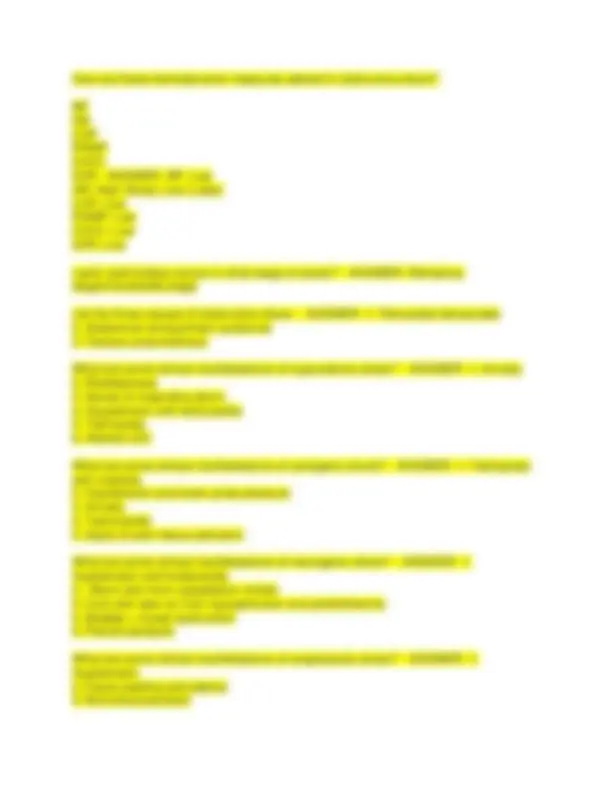
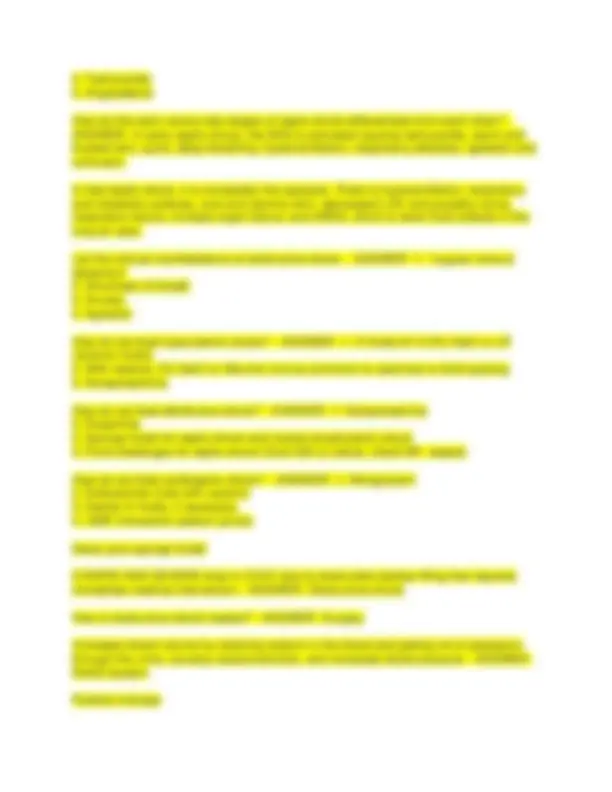
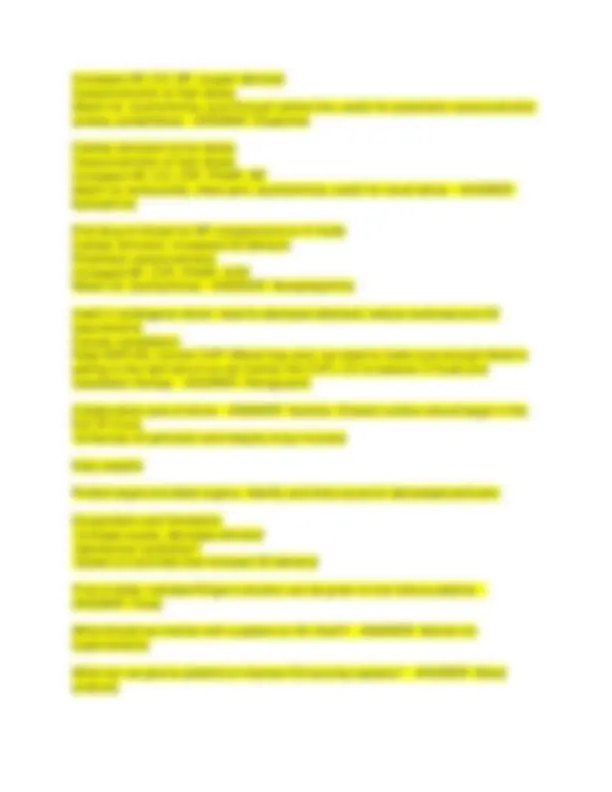
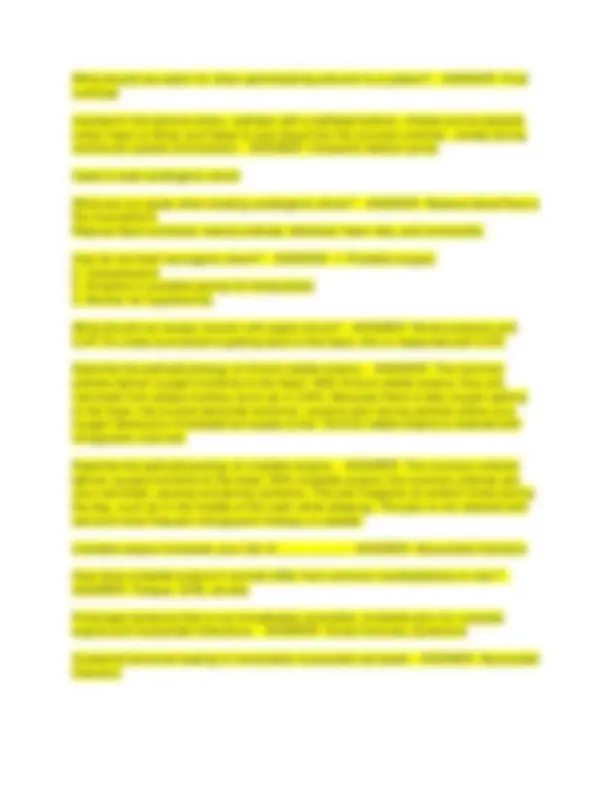
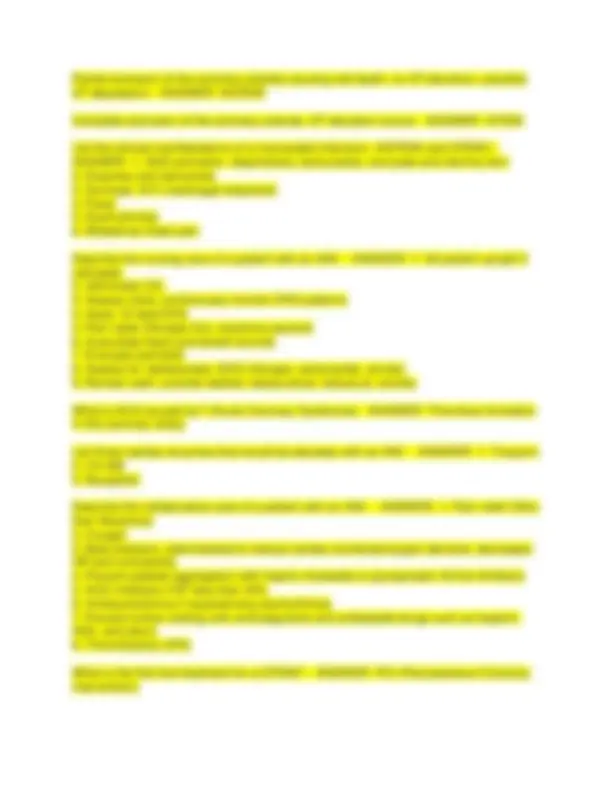
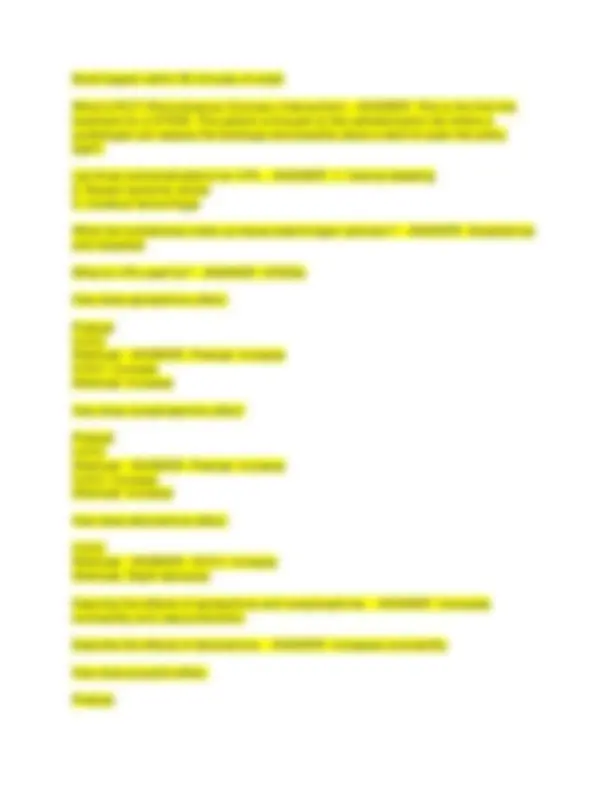
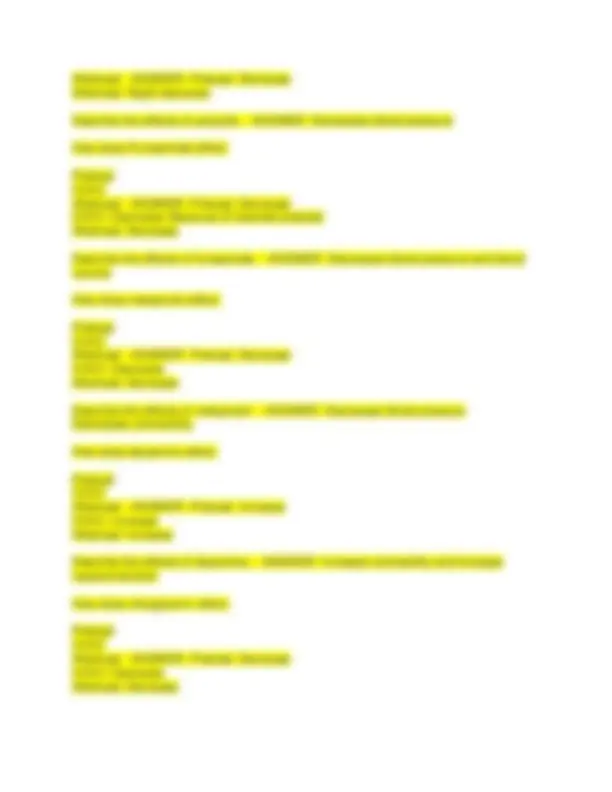
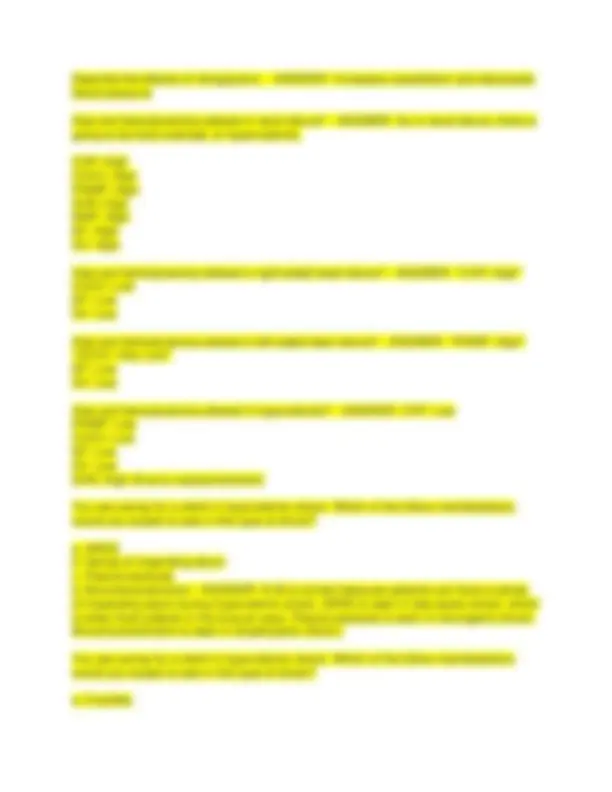
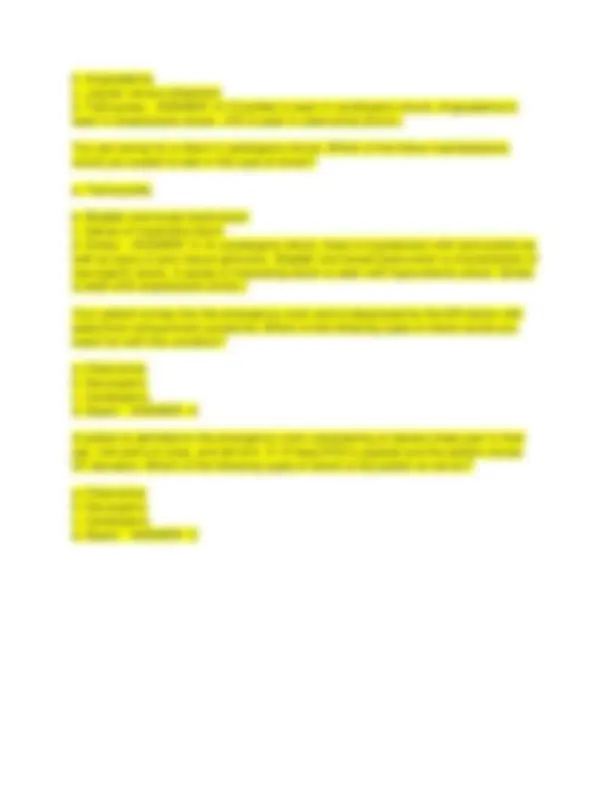



Study with the several resources on Docsity

Earn points by helping other students or get them with a premium plan


Prepare for your exams
Study with the several resources on Docsity

Earn points to download
Earn points by helping other students or get them with a premium plan
Community
Ask the community for help and clear up your study doubts
Discover the best universities in your country according to Docsity users
Free resources
Download our free guides on studying techniques, anxiety management strategies, and thesis advice from Docsity tutors
CMCP VASODEPRESSOR SYNOPE AND POSTURAL HYPOTENSION QUESTIONS AND ANSWERS. 2025.pdf
Typology: Exams
1 / 35

This page cannot be seen from the preview
Don't miss anything!




























Which patient is most at risk for developing delirium? a. A 50-yr-old woman with cholecystitis b. A 19-yr-old man with a fractured femur c. A 42-yr-old woman having an elective hysterectomy d. A 78-yr-old man admitted to the medical unit with complications related to heart failure - ANSWER- D You are caring for a patient who is experiencing delirium due to a lack of sleep. Which of the following nursing interventions would be inappropriate in treating this patients' condition? a. You treat the patients' primary diagnosis that is causing the delirium. b. You turn on the lights and a radio next to the patients' bed to reorient them. c. You use appropriate touch and verbal communication to help reorient the patient. d. You put an easy-to-read clock in the patients' room and a calendar close to their bed.
Which of the following ECG findings alerts the nurse that the client needs an antiarrhythmic? A. Normal sinus rhythm B. Sinus bradycardia C. Sinus arrhythmia D. Frequent ventricular ectopy - ANSWER- D (Ventricular ectopy can be a life- threatening arrhythmia; therefore, the client needs an arrhythmic. Other choices are not arrhythmias that need to be treated. An ectopic rhythm is an irregular heart rhythm due to a premature heartbeat. Ectopic rhythm is also known as premature atrial contraction, premature ventricular contraction, and extrasystole. When your heart experiences an early beat, a brief pause usually follows.) When administering an antiarrhythmic agent, which of the following assessment parameters is the most important for the nurse to evaluate? A. ECG B. Pulse rate C. Respiratory rate D. Blood pressure - ANSWER- A (The ECG is the most important parameter to assess. B, C, and D need to be monitored, but the ECG is the most important.) Epinephrine is used to treat cardiac arrest and status asthmaticus because of which of the following actions? A. Increased speed of conduction and gluconeogenesis B. Bronchodilation and increased heart rate, contractility, and conduction C. Increased vasodilation and enhanced myocardial contractility D. Bronchoconstriction and increased heart rate - ANSWER- B (Bronchodilation results from stimulated beta receptors, and cardiac effects result from the stimulation of ß receptors. Choice A does not address respiratory effects of medication. Choice C is incorrect because α-stimulating drugs cause vasoconstriction. Bronchodilation, not bronchoconstriction, results from ß2 activity.) Following norepinephrine (Levophed) administration, it is essential to the nurse to assess: A. electrolyte status B. color and temperature of toes and fingers C. capillary refill D. ventricular arrhythmias - ANSWER- B (Because decreased perfusion is a side effect of norepinephrine (Levophed), the nurse must check circulation frequently. Capillary refill is not a reliable indication of perfusion in a shock state. Choices A and D are not specific for norepinephrine.) When administering dopamine (Intropin), it is most important for the nurse to know that: A. the drug's action varies according to the dose.
when the pain begins to subside. Adequate dosing is important; however, the concept of controlled dosing applies more to potent vasoactive drugs.) For a cognitively impaired client who cannot accurately report pain, what is the first action that you should take? A. Closely assess for nonverbal signs such as grimacing or rocking. B. Obtain baseline behavioral indicators from family members. C. Look at the MAR and chart, to note the time of the last dose and response. D. Give the maximum PRS dose within the minimum time frame for relief. - ANSWER- B (Complete information from the family should be obtained during the initial comprehensive history and assessment. If this information is not obtained, the nursing staff will have to rely on observation of nonverbal behavior and careful documentation to determine pain and relief patterns.) A nurse is assessing an electrocardiogram rhythm strip. The P waves and QRS complexes are regular. The PR interval is 0.16 second, and QRS complexes measure 0.06 second. The overall heart rate is 64 beats per minute. The nurse assesses the cardiac rhythm as: A. Normal sinus rhythm B. Sinus bradycardia C. Atrial fibrillation D. First-degree heart block. - ANSWER- A (This rhythm is NSR. The P waves and QRS complexes are regular. The PR interval is less than 0.2 seconds. The QRS complex is less than 0.12 seconds. The heart rate is between 60-100 BPM.) A nurse notices frequent artifact on the ECG monitor for a client whose leads are connected by cable to a console at the bedside. The nurse examines the client to determine the cause. Which of the following items is unlikely to be responsible for the artifact? A. Frequent movement of the client B. Tightly secured cable connections C. Leads applied over hairy areas D. Leads applied to the limbs - ANSWER- B (Motion artifact, or "noise," can be caused by frequent client movement, electrode placement on limbs, and insufficient adhesion to the skin, such as placing electrodes over hairy areas of the skin. Electrode placement over bony prominences also should be avoided. Signal interference can also occur with electrode removal and cable disconnection.) A nurse is watching the cardiac monitor and notices that the rhythm suddenly changes. There are no P waves, the QRS complexes are wide, and the ventricular rate is regular but over 100. The nurse determines that the client is experiencing: A. Premature ventricular contractions B. Ventricular tachycardia C. Ventricular fibrillation
D. Sinus tachycardia - ANSWER- B (Ventricular tachycardia is characterized by the absence of P waves, wide QRS complexes (usually greater than 0.14 second), and a rate between 100 and 250 impulses per minute. The rhythm is usually regular.) A nurse is viewing the cardiac monitor in a client's room and notes that the client has just gone into ventricular tachycardia. The client is awake and alert and has good skin color. The nurse would prepare to do which of the following? A. Immediately defibrillate B. Prepare for pacemaker insertion C. Administer amiodarone (Cordarone) intravenously D. Administer epinephrine (Adrenaline) intravenously - ANSWER- C (First-line treatment of ventricular tachycardia in a client who is hemodynamically stable is the use of anti- dysrhythmics such as amiodarone (Cordarone), lidocaine (Xylocaine), and procainamide (Pronestyl). Cardioversion also may be needed to correct the rhythm (cardioversion is recommended for stable ventricular tachycardia). Defibrillation is used with pulseless ventricular tachycardia. Epinephrine would stimulate and already excitable ventricle and is contraindicated.) A nurse is caring for a client with unstable ventricular tachycardia. The nurse instructs the client to do which of the following, if prescribed, during an episode of ventricular tachycardia? A. Breathe deeply, regularly, and easily B. Inhale deeply and cough forcefully every 1 to 3 seconds C. Lie down flat in bed D. Remove any metal jewelry - ANSWER- B (Cough cardiopulmonary resuscitation (CPR) sometimes is used in the client with unstable ventricular tachycardia. The nurse tells the client to use cough CPR, if prescribed, by inhaling deeply and coughing forcefully every 1 to 3 seconds. Cough CPR may terminate the dysrhythmia or sustain the cerebral and coronary circulation for a short time until other measures can be implemented.) A client is having frequent premature ventricular contractions. A nurse would place priority on assessment of which of the following items? A. Blood pressure and peripheral perfusion B. Sensation of palpitations C. Causative factors such as caffeine D. Precipitating factors such as infection - ANSWER- A (Premature ventricular contractions can cause hemodynamic compromise. The shortened ventricular filling time with the ectopic beats leads to decreased stroke volume and, if frequent enough, to decreased cardiac output. The client may be asymptomatic or may feel palpitations. PVCs can be caused by cardiac disorders or by any number of physiological stressors, such as infection, illness, surgery, or trauma, and by the intake of caffeine, alcohol, or nicotine.) A client has developed atrial fibrillation, with a ventricular rate of 150 beats per minute. A nurse assesses the client for:
oxygen concentration should not be the nurse's first course of action; rather, the nurse should notify the physician promptly. Administering a prescribed analgesic would not decrease ventricular irritability.) You are caring for a patient following a motor vehicle accident in the Intensive Care Unit at your hospital. Which of the following would not be a primary concern for you in the critical care setting? a. The patients' sleep cycle may become disrupted in the ICU. b. The patient may develop dementia due to an altered sleep/wake cycle in the intensive care unit. c. The patient may develop anxiety due to the fear of being in a foreign environment, pain, or loss of control. d. The patients' communication skills are impaired due to possible sedation and endotracheal tubes. - ANSWER- B (B is incorrect because the patient will not develop dementia in the ICU, but they may develop delirium due to sedation and an altered sleep/wake cycle. A is true because sedatives disrupt a patients' sleep. In addition, there can be a lot of noise in the ICU from alarms, and the patient may need consistent assessments, even throughout the night which potentially could wake up the patient every time. C is correct because anxiety is common in an ICU patient--they are afraid because they don't know where they are, they're confused, the ICU is fast paced, they are out of control, and they may be in pain. D is correct because it is certainly possible that the patient will not be able to communicate to the nurse. The patient may be sedated so they are not awake and alert, and if they are sedated they will have an endotracheal tube so they will not be able to speak even if they are alert.) Which of the following would not be considered a cause of anxiety with the patient in an intensive care unit, according to the lecture? a. Fear b. Loss of control c. Mental health issues d. Pain e. Intense pace of the unit f. Foreign environment - ANSWER- C Which of the following would not be considered a cause of communication difficulties with the critical care patient, according to the lecture? a. Diuretics b. Sedatives c. Paralytics d. Endotracheal tubes e. Altered level of consciousness f. The patient's disease process - ANSWER- A (Diuretics unlikely would cause the patient to have difficulty communicating with the nurse, or vice versa.)
You are a nurse preceptor teaching several nursing students about the concept of delirium in the ICU. Which of the following statements made the student is a true statement about delirium? a. "Delirium is synonymous with dementia." b. "Delirium cannot be caused by medications." c. "Delirium is a chronic problem." d. "Delirium can be caused by sleep deprivation, sensory overload, anxiety, and disease processes." - ANSWER- D (D is correct because these are accurate causes of delirium. Sleep deprivation can make the patient very confused. Sedatives can cause delirium due to it altering their sleep-wake cycle. Invasive lines and tubes can cause a sensory overload in the patient. Hypoxia can also precipitate delirium. Delirium and dementia are completely different. Dementia is a chronic condition that is a slow onset. Delirium is an acute problem characterized by altered mentation, psychomotor behaviors (restlessness, lethargy) and an altered sleep-wake cycle (night time agitation.) Which of the following would a patient most likely exhibit that has delirium? Select all that apply. a. Night time agitation b. Attentiveness c. Short attention span d. Irritability e. Long term memory loss - ANSWER- A C D (Characteristics of delirium include:
d. You encourage family engagement with the patient care. - ANSWER- A (Early mobility is important with treating and preventing delirium.) Describe CAM-ICU. - ANSWER- CAM-ICU is the Confusion Assessment Method for ICU. It is used to assess delirium in patients in the ICU. It assesses acute changes in mental status, inattention, level of consciousness, and disorganized thinking. Questions asked in the CAM-ICU Flowsheet:
a. Ask the patient to rank her pain on a scale of 0- 10 b. Increase the fentanyl drip rate per protocol c. Call the physician for additional pain medication orders d. Get a music therapy consult e. Look at the patient's facial expression and muscle tension - ANSWER- E (Always assess first!) You walk into your intubated patient's room with an IV fentanyl drip at 25mcg/hour who presents with the following: Heart rate: 130 BP: 140/ RR: 29, ventilator alarming Hands clenched, brow narrowed, patient eyes open and looking at you anxiously. Which of the following should the nurse do first? a. Ask the patient "Are you in pain?" b. Stop the fentanyl drip and request orders for a new analgesic c. Increase the fentanyl drip rate per protocol d. Tell the patient to calm down e. Get a music therapy consult - ANSWER- A Which of the following patients would not need sedation? a. A 42-year-old male patient with a history of diabetes who has pulled out his IV 3 times. b. A 10-year-old female who has just been admitted to the trauma bay with 3rd degree burns on 80% of her body. c. An 18-year-old male that is agitated from lack of sleep. d. A 30-year-old paralyzed male that cannot breathe independently upon admittance to the ER. - ANSWER- C Side effects of Fentanyl - ANSWER- Hypotension, bradycardia, hepatotoxicity, dysrhythmias, AV blocks Nursing considerations when administering Fentanyl - ANSWER- Monitor blood pressure, monitor heart rate, monitor liver function, monitor EKGs What is the benzodiazepine of choice in the ICU? What are the nursing considerations? - ANSWER- Midazolam (Versed) The drug can accumulate in the spine if you are sedated for a long time. You can build up tolerance and withdrawal. It causes anterograde amnesia (Unable to make new memories) Watch for respiratory depression!
What two rhythms do you do defibrillation? - ANSWER- Vtach w/o a pulse Vfib What four rhythms do you do synchronized cardioversion? - ANSWER- SVT Atrial fibrillation Atrial flutter Vtach with a pulse What three rhythms would you consider doing pacing? - ANSWER- Symptomatic bradycardia 3rd degree AV block Junctional rhythm This medication stops the heart and resets it to a normal sinus rhythm, used for SVT Adverse effects include a worsening dysrhythmia and low blood pressure - ANSWER- Adenosine This medication is used to increase the heart rate of a patient if they are experiencing bradycardic rhythms such as 2nd degree AV block type 1, 3rd degree heart block, junctional rhythm, and symptomatic sinus bradycardia - ANSWER- Atropine What three antidysrhythmic drugs are used for heart rates that are too fast? - ANSWER- Amiodarone Adenosine Beta blockers (-olol) This medication is used to treat heart rates that are way too fast, such as VTach, VFib, atrial fibrillation, Aflutter, sinus tachycardia, and SVT that all do not respond to vagal maneuvers. - ANSWER- Amiodarone You are caring for a client who has sinus bradycardia. Which of the following is not a cause of sinus bradycardia? a. Vasovagal response b. Being a marathon runner c. Hypoxia d. Atropine administration e. Beta blockers and calcium channel blockers - ANSWER- D (Atropine speeds up the heart rate and is used for slow EKG rhythms such as 3rd degree AV block, junctional rhythm, and symptomatic sinus bradycardia.) Which of the following medications would cause an increased heart rate? Select all that apply. a. Metoprolol
a. Cardiac surgery b. Myocardial infarction c. Digoxin toxicity d. Urinary tract infection e. Beta blockers and calcium channel blockers - ANSWER- A B C E Potential causes of PVCs and PACs - ANSWER- - Cocaine
Failure to sense - ANSWER- Electrical stimulus is sent but isn't sensing pts. underlying rhythm, it's sending impulses at random times Treatment: Turn up sensitivity setting How hard the muscle fibers stretch in the ventricle before the next contraction. Describes intravascular volume indicator (and/or ventricular pump ability) - ANSWER- Preload List the hemodynamic measures for preload. - ANSWER- 1. CVP/RAP